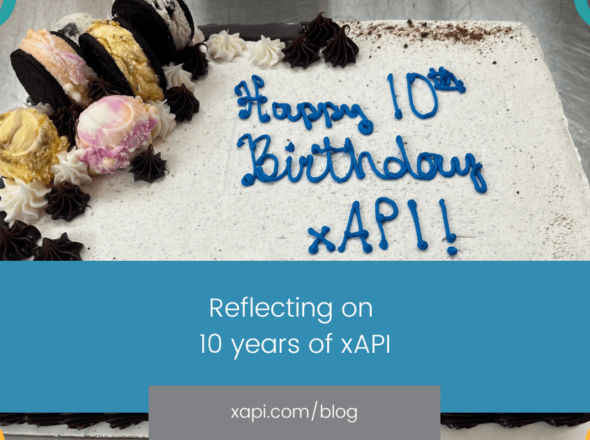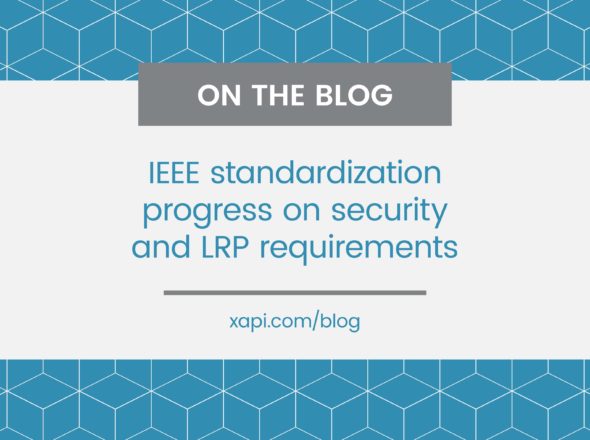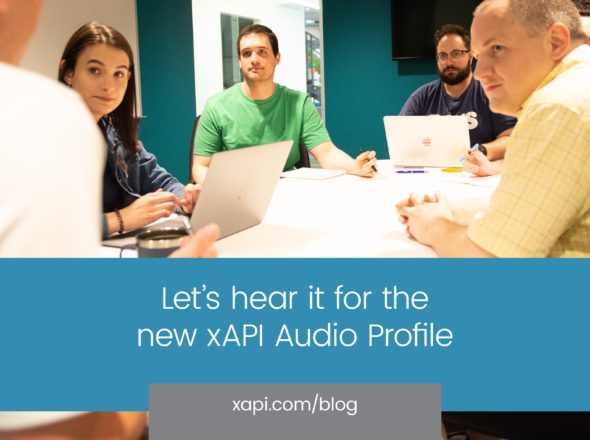On August 13th, 2015, we launched a heavily revised version of tincanapi.com. Andrew Downes has been working away, as he does, creating new content. Rather than direct it all at the blog, though, he’s been rethinking and restructuring the core site and sharing his insights for first-timers, learning designers, learning product vendors, and organizations. There are countless other updates laid out below. Please spend some time with them.
Many readers of the site, though, will likely notice a significant change to our handling of the name… tincanapi.com. Years ago, Mike shared our perspective on the name, that we were going to call it Tin Can API. For some, this has been a contentious issue. With the new site, we’ve made the site behave as we have been personally for a long time. We call it whatever you call it.
On the site, you’ll notice a toggle in the upper left. If you prefer to call it Tin Can, do so. If you prefer xAPI, that’s great too. Whether you visit tincanapi.com or experienceapi.com, the site will present everything to you using your preferred name.
It comes down to this: arguing about an API’s name simply isn’t productive. We have far more important things to accomplish together.
So please, enjoy the new content. Go build a brilliant activity provider. Make some statements. Or ask us for help if you need it.
Here are the new sections of the site:
Understand
The existing Tin Can Explained page gives a really helpful introduction to Tin Can if you’ve never heard of it. We’ve brought this section up to date a little and added some pages around the different components of the new enterprise learning ecosystem that Tin Can enables. We’ve also added pages targeted specifically at organizations, learning product vendors and vendors of products outside L&D.
Get Started
By now, if you haven’t heard of Tin Can and got a basic understanding, you’ve probably been living on mars. These days, the question we get asked most isn’t “what’s Tin Can?” but “how do I get started?” If that’s your question, then good news – we’ve created a new section just for you!
The get started section includes pages targeted at product vendors, content authors and organizations. It includes guides to help you see Tin Can in action, get a Learning Record Store (LRS) and run a pilot project in your organization. There’s a collection of pages to help you think about moving on from SCORM, too.
Design
We already had a bunch of resources for developers, but not much really aimed at learning designers. We’ve added a page outlining the impact of Tin Can on learning design, including reflections on a handful of learning models and theories in the light of Tin Can. If you’re thinking more at the strategy level, we’ve got a page on incorporating Tin Can into your learning strategy, too.
At a practical level, there’s a guide on statement design, an introduction to recipes for learning designers, and an assignment for you to try out what you learn from the new pages we’ve written.
Developers
The developers section was already crammed full of resources. We’ve tidied these up to make them easier to find and created an interactive statement explorer page to help you understand the structure of the statement.
The statement generator we created a few years ago was due for an update and ADL recently published a new more comprehensive statement generator. We don’t believe in reinventing the wheel, so we’ve taken the ADL tool, made it orange and included it on the site.
To help you put all these resources into practice, we’ve created a series of challenges for developers to try out writing code for Tin Can.
Webinars
The previous webinar list contained embedded YouTube videos for all our webinars. We’ve got so many webinar recordings now that it was getting hard to find webinars on specific topics so we’ve created a new categorized webinar list. Each of the webinars is now on its own page, making it easier to share the recording with other people.


